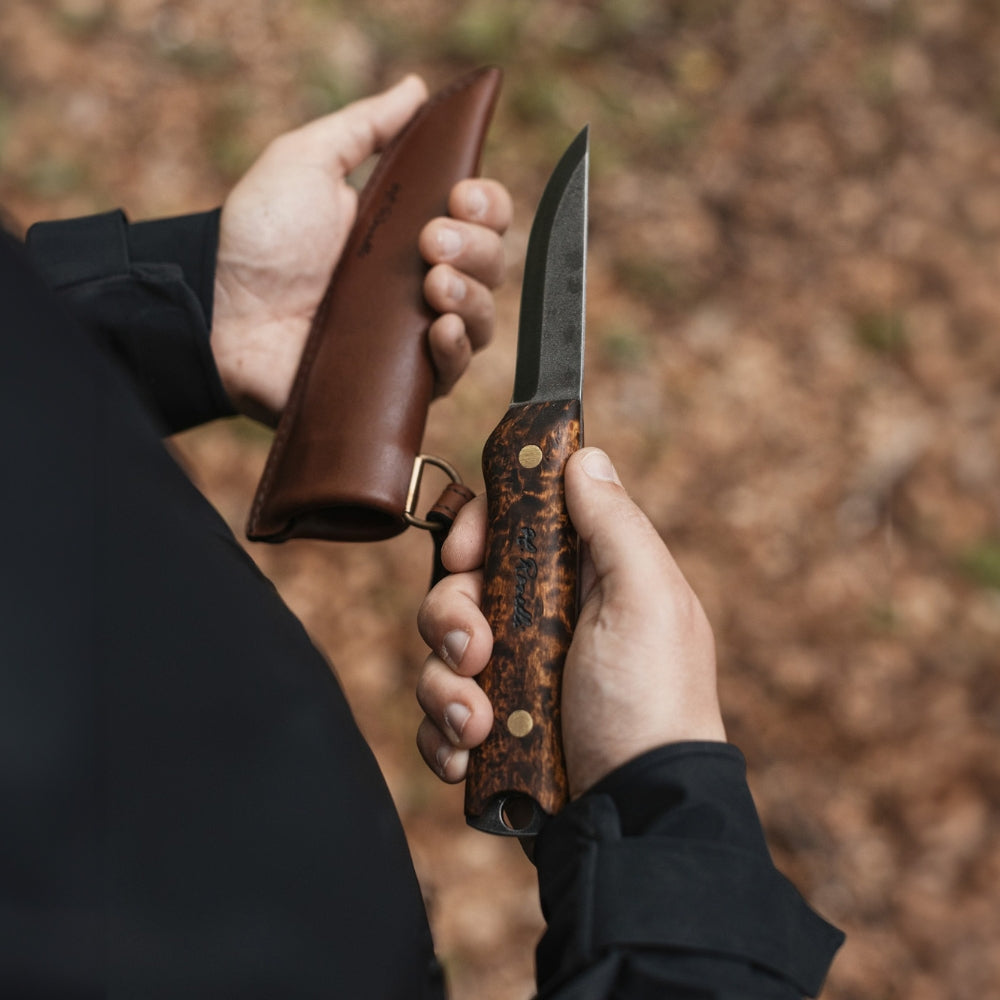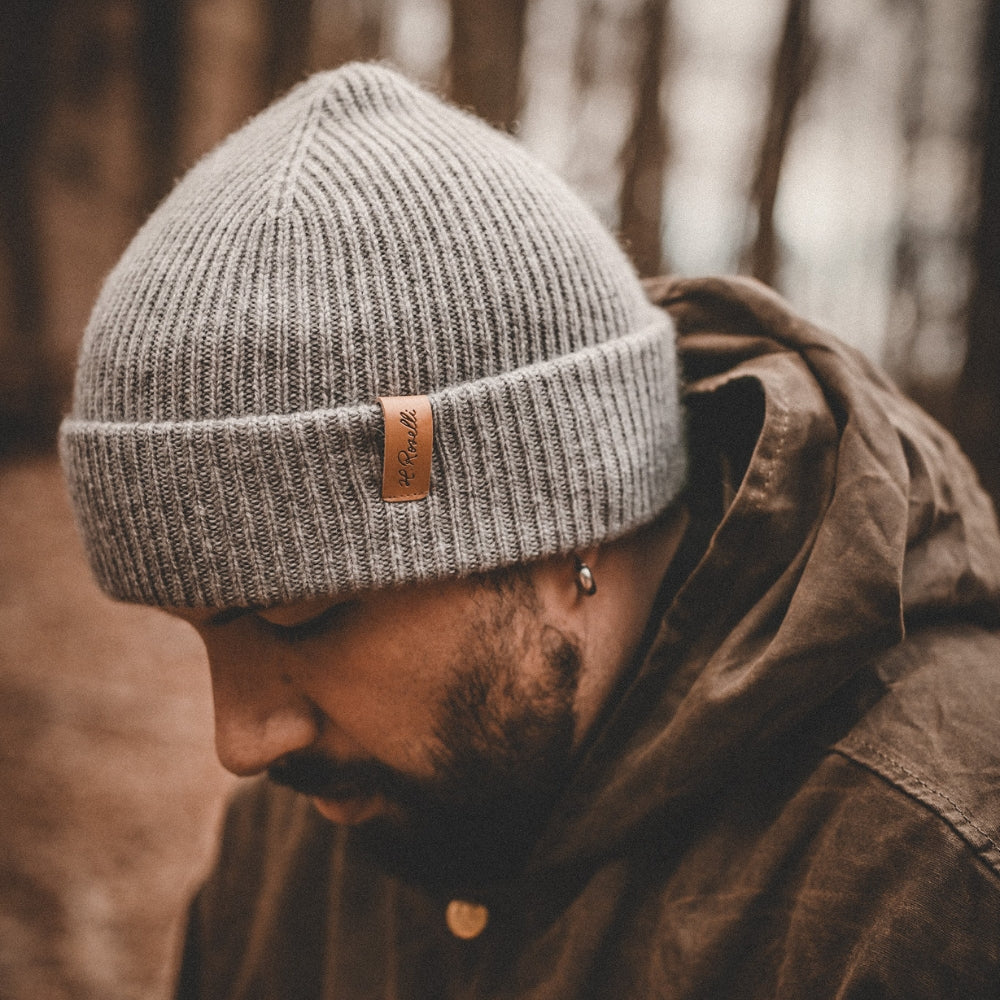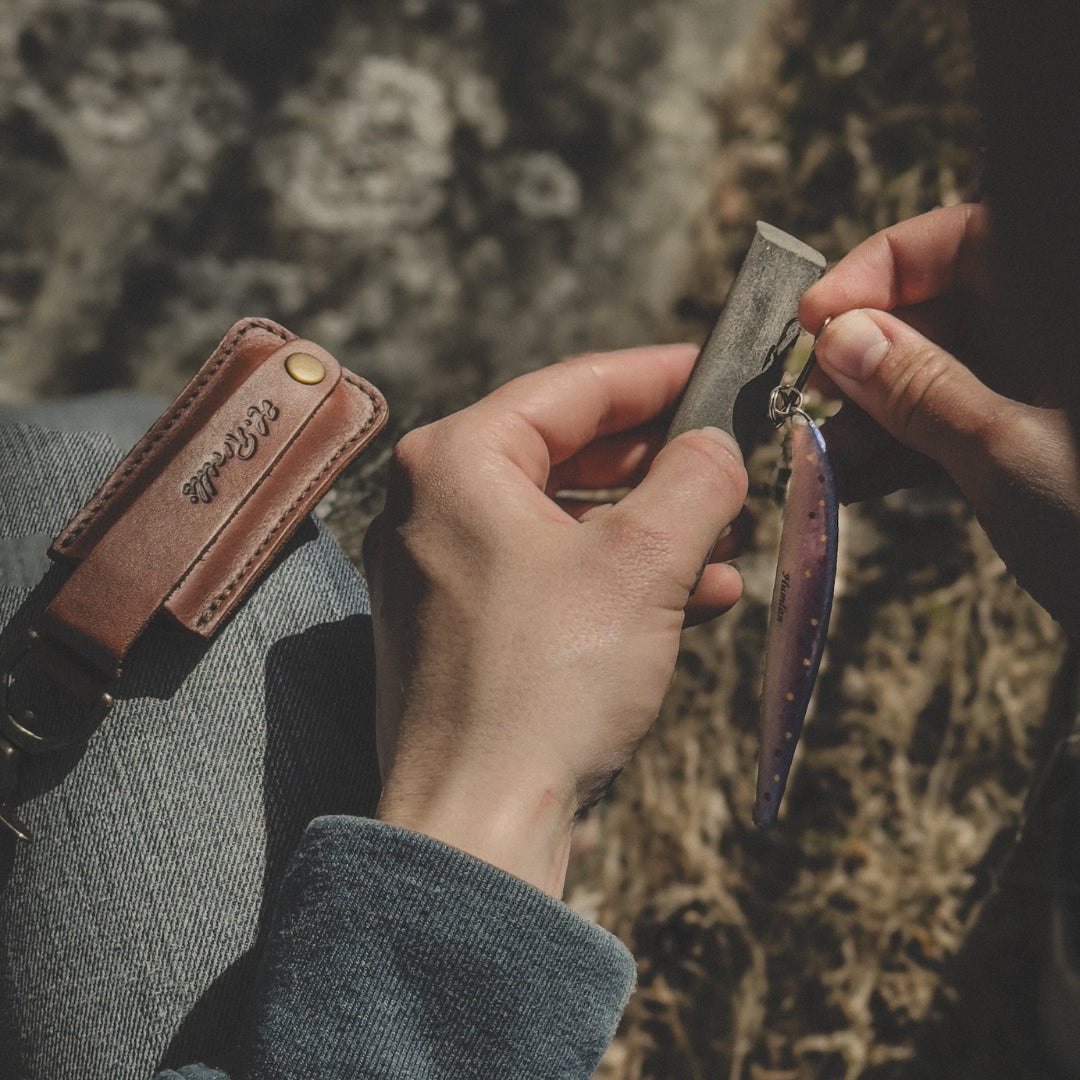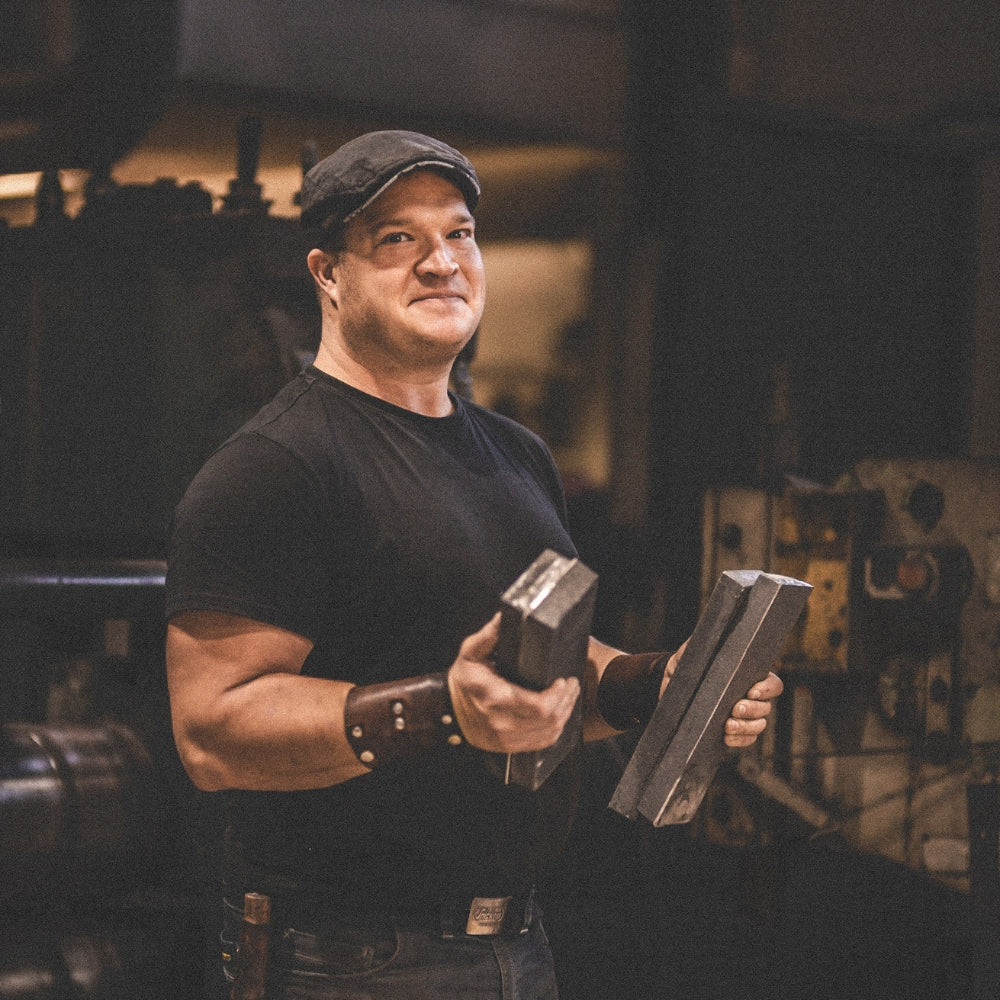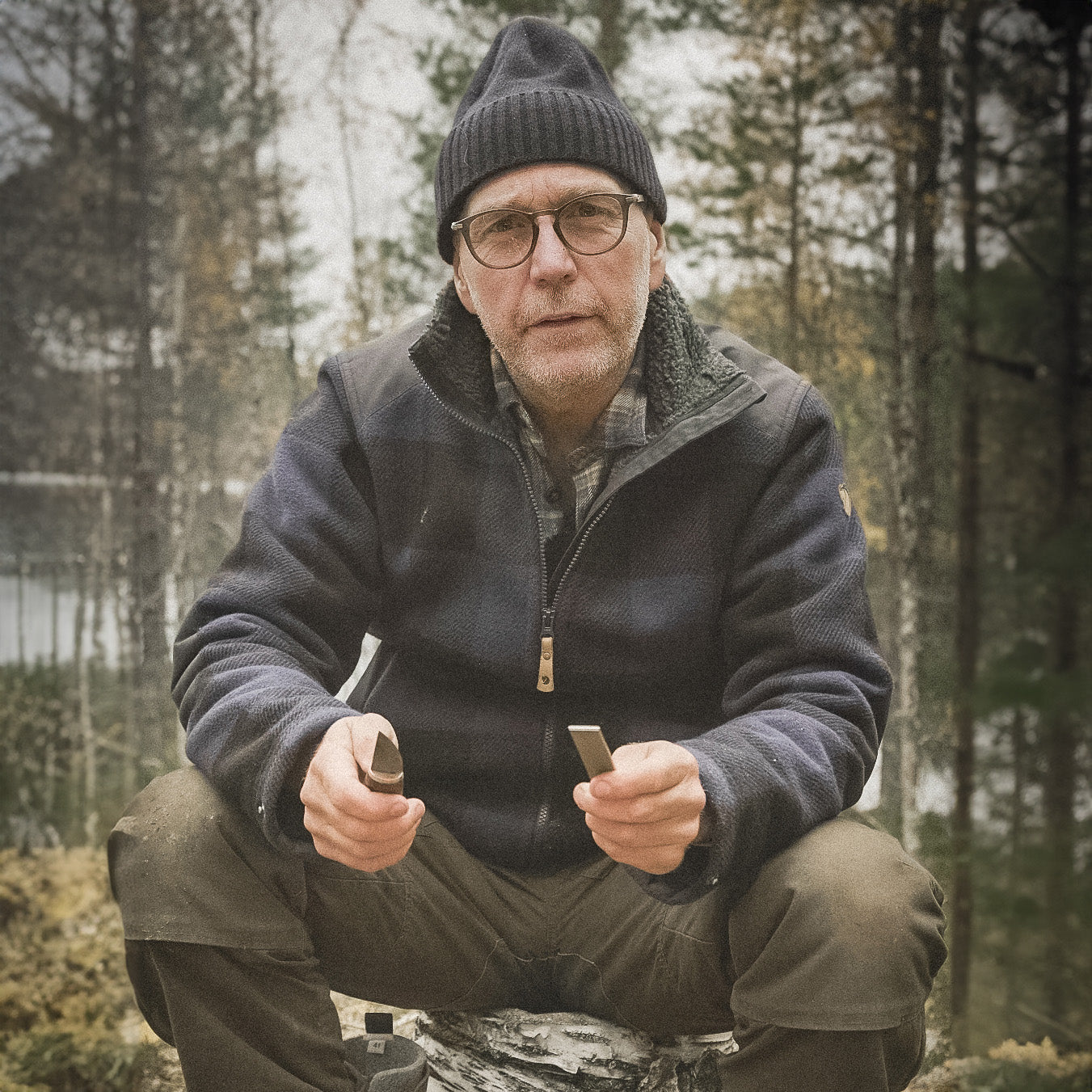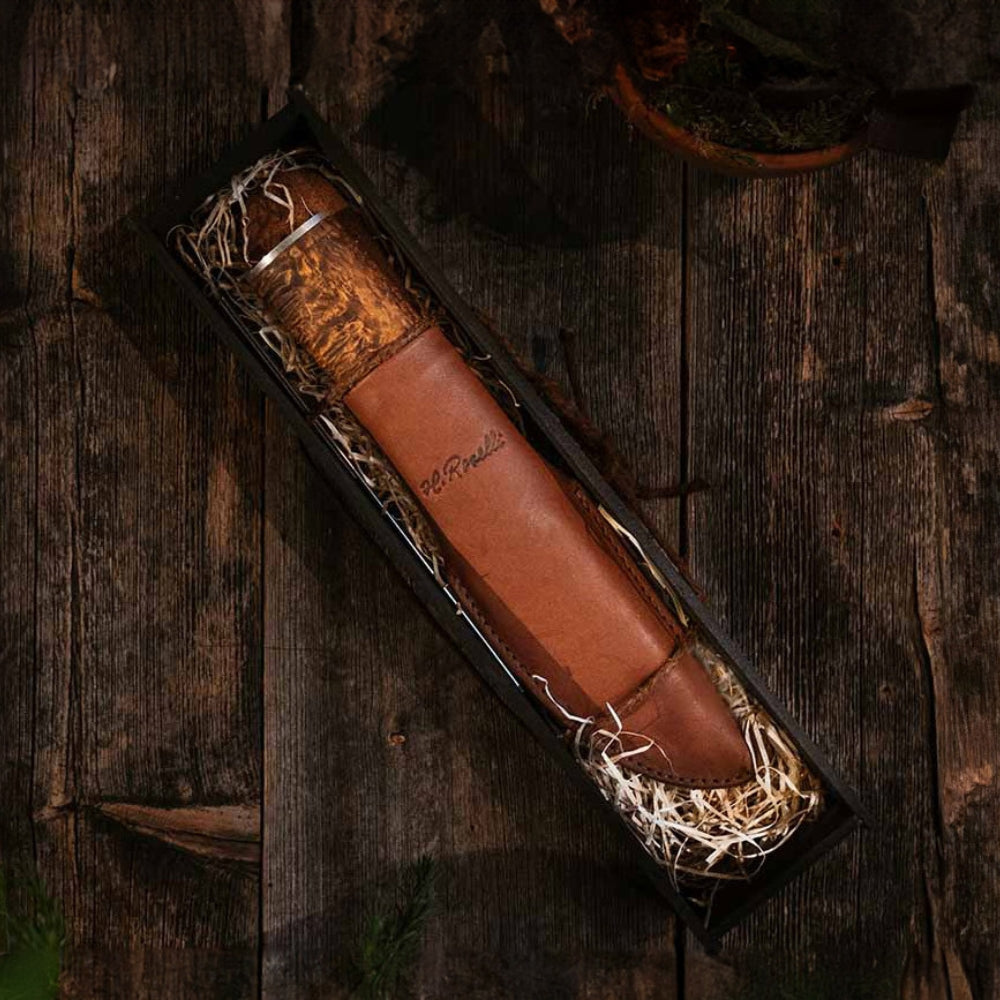When choosing a carbon steel knife you have a knife that is sharper and remains sharper than a stainless steel. The disadvantage though is that a carbon steel knife can rust. However, rust is not to be mistaken for patina. In this blogpost we'll explain what patina is, how it occurs, its advantages and how you separate it from rust.
A patina is chemistry's way of saying that your knife is aging. However, you don’t need to worry about it because patina is not a bad thing, like rust. You could say that Patina almost has the same function as growth rings inside a tree trunk, it is merely a sign of life and actually makes the knife stronger.
What is patina and why does it appear?
So what is patina and why does it appear on your blade? Well, first of all we have to explain what patina is, on a chemistry level. Patina is a type of metal corrosion that causes stains and marks on the blade.
It’s very common for patina to appear on Ultra High Carbon and Carbon Steel blades; it does not appear on stainless steel blades. This is because stainless steel blades contain something called Chromium that makes them resistant to all kinds of corrosion. Hence the name, stainless steel, because they won’t get stains of patina or rust.
But why do patina and stains appear on carbon steel blades? Patina, a metal corrosion, is almost impossible to avoid because it appears when the carbon steel reacts towards moisture, salt and or acidity. For example, if you touch your carbon steel blade with a sweaty finger you’ll affect the chemistry of the blade due to salt and moisture. A metal corrosion will most likely appear on your blade, forming a patina, because of the sensitivity in carbon steel. You don’t need to be worried about Patina though, because compared to rust, it’s not a bad thing.
What is the difference between rust and patina?
Now that you know what a patina is, how do you separate and recognize it from rust? Rust is also a type of metal corrosion that causes stains and marks on the blade, and it can be difficult to separate it from patina. Both are a form of Iron Oxide, but the chemistry behind the two is different.
What does this mean? Even though they’re chemically alike, the characteristics of rust are very different from patina and damaging to your blade.
Rust — Causes irreversible damage to your carbon steel blade, creates unwanted cracks and sharp edges on the metal surface.
Patina — Works as a protective coating and is merely a discoloration.
How do you know if it’s rust or patina?
Rust and patina are easy to mistake for one another, but they often have different colors. Rust has a red-orange color appearance while patina appears to have a grey or black color. So if you come across orange or red stains, it’s not patina. It’s rust! You can see the difference in the image below. The knife to the left has grey and black stains, a healthy patina developing. While the knife to the right has a red-orange stain, this is damaging rust.

How to avoid rust on your knife
Wash your knife in gentle soap and rinse well with water, carefully removing any dirt from the blade. Strong cleaning products will damage your blade, as will dishwashers. Then dry the blade with a soft, scratch-free cloth and store it in dry, clean conditions. Once in a while, it can also be good if you attach some oil to the blade, we offer a knife blade oil which is excellent for this task. You can find it here
Why is patina good for your knife?
Now you know why rust is bad, but what’s good about patina? A patina works as a protective layer on your blade, and actually prevents future oxidation on your carbon steel blade. Patina is good for your knife because you won’t have to worry about any form of corrosion or rust. The patina prevents that and protects your carbon steel blade. In time you’ll also discover that knives that naturally develop patina tend to be free from rust.
As described in the beginning, you could say that Patina almost has the same function as growth rings inside a tree trunk, it is merely a sign of life and actually makes the knife stronger. That is why some even try to create an intentional patina on their carbon steel knives to prevent rust.
Care for your Roselli
Great gear is meant to be used for a long time. And the sign of a truly weathered outdoorsman is not the shiny new, but rather the patinated mark of trusted classics. A well-made knife is crafted for a lifetime of adventure. It loves being put to hard use. Pulling its weight. Care for your Roselli and you'll have a trusty companion for life.
If you need further help or guidance, check out our Care & Repair Guide or contact us directly at info@roselli.fi.
